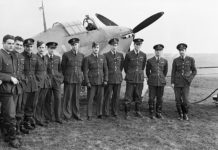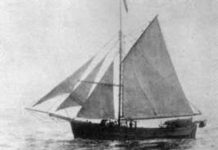Canadian soldiers went into battle in World War I armed with a weapon that had major defects but whose maker was a friend of senior politicians.
The Boer War of 1899 to 1902 saw 7,000 Canadian soldiers fighting on behalf of the British Empire to defeat the Afrikaner farmers.
But, while Canadian lads were fighting and dying (267 lost their lives) the government had a difficult time supplying them with rifles.
Sporting Rifle Evaluated for the Army
British soldiers on the South African battlefields were equipped with the trusty Lee-Enfield .303 bolt-action rifle. But the British manufacturer could not make enough of these weapons to supply Canada as well.
Canadian Prime Minister Sir Wilfrid Laurier took up the idea that the country should make its own rifle. Mysteries of Canada reports that “A new rifle, developed by Sir Charles Ross, had recently appeared on the market. It was a fine target and sporting weapon.”
The Ross Rifle was brought to Ottawa where it won the enthusiastic support of Conservative MP Colonel Sam Hughes, whose committee evaluated the weapon. Hughes was a personal friend of Ross’s.
Canada Makes its own Rifle
Too late for use in South Africa, the Canadian government adopted the Ross Rifle and, says the Canadian Encyclopedia, “In March 1903 the Canadian government signed a contract with Ross for 12,000 rifles to be supplied by the end of 1903.”
The first delivery was two years late and 1,000 were handed to the Royal Northwest Mounted Police. Problems immediately became obvious. The Canadian War Museum relates that it “jammed and often misfired.” Modifications were made and, by the time Canadian soldiers were going into combat in Flanders in 1914 the Mark 3 version was in production.
Ross Rifle Fails in Trench Warfare
The Ross Rifle had proved itself to be a great target shooting weapon, but the battlefield conditions in northern France showed up its glaring weaknesses.
Firstworldwar.com writes that soldiers found the weapon “ill-suited to rapid fire scenarios, frequently locking, and complaints rapidly reached its chief sponsor, the (by-now) Canadian Minister of Militia and Defence Sam Hughes.”
The Canadian Encyclopedia adds that it was “unsuitable for the ‘trench-and-charge’ tactics employed during that war because of its weight, 9 lbs 14 ozs (c 4.5 kg), its overall length, 60½ inches (c 1.5 m) with bayonet fixed.” Canadian soldiers under attack frequently struggled with a jammed weapon as an enemy bore down on them.
Unwieldy, unreliable, and unsuitable; but, in a scenario that still plays out today, the Conservative minister ignored the advice of experts to pull the Ross and replace it with the Lee-Enfield the British were now offering.
Soldiers do their own Re-equipping
Under the controlled conditions of a firing range Ross Rifles performed well, in the confusion and chaos of fighting it was a menace to its users. Histori.ca reveals that, “Because of its complex design, soldiers often reassembled the bolt improperly, resulting in ‘blowback’ of the straight pull bolt or misfires.” With blowback the bolt would come hurtling out of the back of the weapon into the soldier’s face. Sometimes, the bayonet would fall off, the safety catch could cut the soldier’s hand, and mud, of which there was an oversupply, could foul the entire mechanism.
During the Second Battle of Ypres in the spring of 1915, the Mysteries of Canada records that “Canadian soldiers threw away their Ross Rifles in despair and frustration, and picked up Lee-Enfields from dead British soldiers on the battlefield.”
Finally the Ross is Replaced
Despite the mounting criticism, Sam Hughes stubbornly defended his friend’s rifle, claiming the problems were the result of mishandling by soldiers.
But, it was obvious to all except Hughes that the weapon had to be replaced. Canon Frederick Scott was a military chaplain who ministered to Canadian soldiers. In 1934 he published his memoirs in The Great War as I Saw It. He wrote that “The Ross Rifle is the greatest crime ever perpetrated against the soldier boys and their loved ones. The blood of Canadians wasn’t worth the filthy gold that somebody made out of it.”
The commander of the entire allied force, Sir Douglas Haig ordered the Ross out of service in July 1916 to be replaced by the Lee-Enfield. Hughes was livid, said he was the victim of a conspiracy, and even launched into an attack on his boss, Prime Minister Sir Robert Borden.
In November 1916, Hughes resigned under pressure. He died in 1921.







